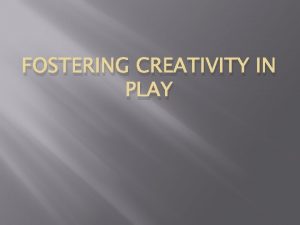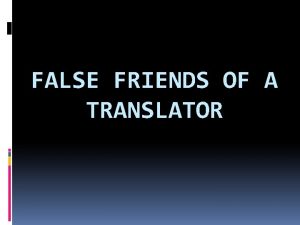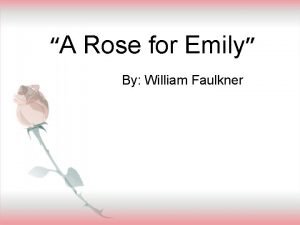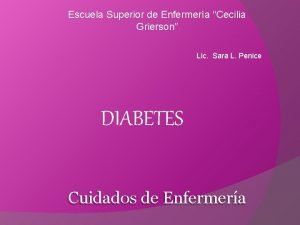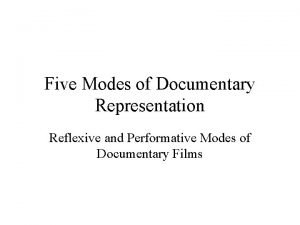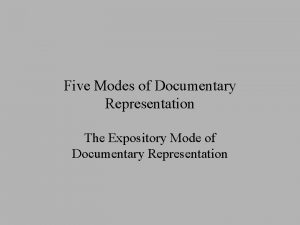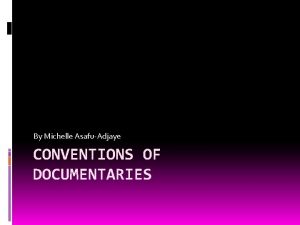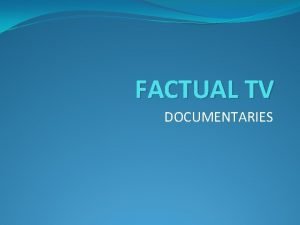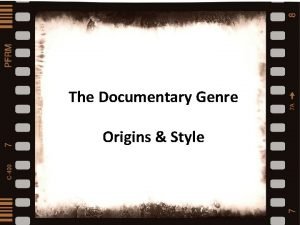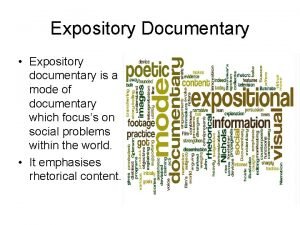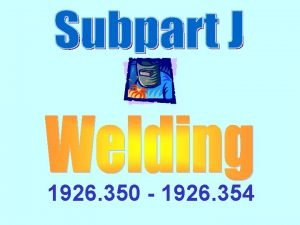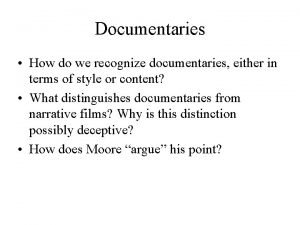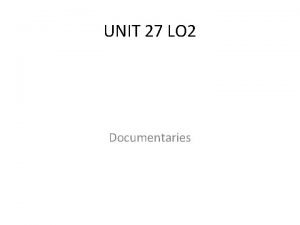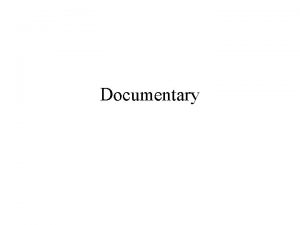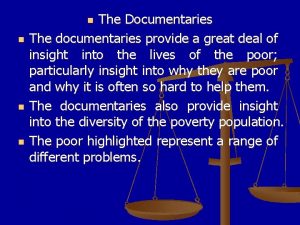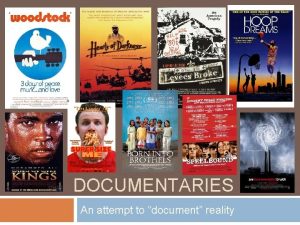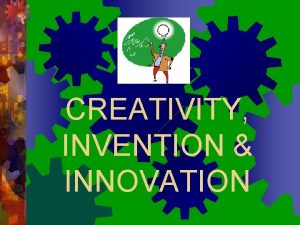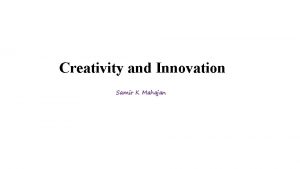DOCUMENTARIES The creativity of actuality John Grierson 1926










- Slides: 10

DOCUMENTARIES

“The creativity of actuality” -John Grierson (1926)

• The aim of a documentary is to report something with evidence. • Documentaries can use narration to anchor meaning. • Have to based on fact and real events • Reconstructions can be used when evidence is lacking but it has to be based on fact

• Arguments range on how creative documentaries should be as problems of authentication can occur. • Some argue that all films are fake, and attempts are filming “reality” becomes affected by the presentation of cameras and camera crews.

FEATURES OF A DOCUMENTARY • OBSERVATION as evidence • INTERVIEW: relied upon for a balanced argument; the interviewer can be seen or unseen. Pictures can be dubbed over top of the interview to convey meaning • MISE-EN-SCENE: very important when reconstructing “reality” • EXPOSITION: what is the point of the documentary?

SOME PURPOSES OF DOCUMENTARIES • Shed light on subjects that the audience might not otherwise be aware of… • Cover people who cannot help themselves and are society’s victims

FORMAT • Rely on the traditional narrative (start, middle and end) • Strong focus on characters and conflict • START: pose a question of opposing views • MIDDLE: complicated examination of the topic/issue showing different sides of the argument and evidence • END: an apparent viewpoint on how the conflict should be resolved

ISSUES • Elements of fictions are often included for atheistic appeal • Timelines can be manipulated • Some aspects can be sensationalized for dramatic/comedic effect • “Evidence” selection can be manipulated by an agenda

TYPES • FULLY NARRATED: use of a voice over to make sense of visuals included with the documentary (“The Voice of God”) • FLY ON THE WALL: rely entirely on observations as something happens • MIXED DOCUMENTARY: mix of interviews, observation and narration. Often presented as “news” reporting

MORE TYPES • SELF-REFLECTIVE: subject acknowledges the camera (some critics think this type is more about the person in front of the camera instead of the topic/subject). • DOCUDRAMA: attempts a re-enactment of events that happened and are a fictional narrative based on “facts”. • DOCUSOAPS: this type follows people’s lives
